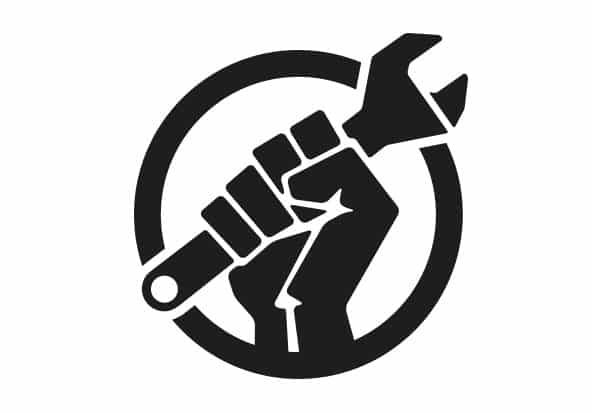What’s in today’s article?
- Why in News?
- What is the right to repair movement?
- What is the goal of the right to repair movement?
- What is the significance of the right to repair?
- Why do electronic manufacturers oppose this movement?
- News Summary
Why in News?
- Amid the right to repair movement in different parts of the world and National Consumer Day (December 24), the Union Food and Consumer Affairs Minister recently announced a ‘right to repair’ portal in India.
What is the right to repair movement?
- When the average consumer buys electronic equipment, they are aware that it will quickly become obsolete when the maker introduces newer versions of the same device.
- As the item ages, problems arise, and one is left at the mercy of manufacturers, who make repairs inaccessible to the majority by dictating who can service your equipment and making it an extremely expensive process.
- This is a question that advocates of the global ‘right to repair’ movement have been dealing with for decades.
- Countries all across the world (including US, UK) have been striving to implement effective ‘right to repair’ laws in recent years.
What is the goal of the right to repair movement?
- The goal of right to repair movement is to get companies to make spare parts, tools and information on how to repair devices available to customers and repair shops to increase the lifespan of products and to keep them from ending up in landfills.
What is the significance of the right to repair?
- Reduce pollution and wastage of resources: The electronic manufacturers are encouraging a culture of ‘planned obsolescence’ – which means that devices are designed specifically to last a limited amount of time and to be replaced. This leads to immense pressure on the environment (as manufacturing and disposing an electronic device is a highly polluting process) and wastes natural resources.
- Boost business for small repair shops, which are an important part of local economies.
- Improves quality and reduces prices: If a manufacturer has monopoly on repairs, then prices rise exponentially and quality tends to drop.
Why do electronic manufacturers oppose this movement?
- However, it is unsurprising that the movement has met with fierce opposition from IT giants such as Apple and Microsoft over the years.
- Their argument is that opening up their intellectual property to third party repair services or amateur repairers could lead to exploitation and impact the safety and security of their devices.
- These companies are constantly claiming that they are working towards greater durability themselves. For example, recently Apple took more steps towards reducing its contribution to e-waste.
-
Image Caption: Repair Manifesto
News Summary
- Background:
- Earlier, the Union government set up a committee (headed by Nidhi Khare) to develop the “comprehensive framework” on the Right to Repair.
- The sectors identified include Farming Equipment, Mobile Phones/ Tablets, Consumer Durables and Automobiles/Automobile Equipment.
- The framework is an attempt to reduce restrictive practices implemented by some manufacturers in order for consumers to repair goods such as consumer durables, phones, and automobiles on their own.
- The framework will become a “game-changer” for the sustainability of the products and serve as a catalyst for employment generation.
- The committee:
- Pointed to practices such as planned obsolescence and creation of monopolies on spare parts while stressing on the need to give consumers the right to choose how they get products fixed/right to repair.
- Flagged how consumers often lose the right to claim a warranty if they get a product repaired from a non-recognized outfit.
- About the right to repair portal:
- The portal will allow manufacturers to share the manual of product details with customers, allowing them to repair a product themselves or through third parties rather than relying on original manufacturers.
- With this, India has joined a clutch of countries like the US and the UK that offer this facility.
Q1) When did the right to repair movement begin?
The concept of the right to repair originated in the United States, where the Motor Vehicle Owners’ Right to Repair Act of 2012 compelled manufacturers to release the necessary documentation and information so that anybody may repair their vehicles.
Q2) Does India need a right to repair legislation?
The ‘right to repair’ is not yet recognised as a statutory right in India.
Last updated on January, 2026
→ Check out the latest UPSC Syllabus 2026 here.
→ Join Vajiram & Ravi’s Interview Guidance Programme for expert help to crack your final UPSC stage.
→ UPSC Mains Result 2025 is now out.
→ UPSC Notification 2026 is scheduled to be released on January 14, 2026.
→ UPSC Calendar 2026 has been released.
→ UPSC Prelims 2026 will be conducted on 24th May, 2026 & UPSC Mains 2026 will be conducted on 21st August 2026.
→ The UPSC Selection Process is of 3 stages-Prelims, Mains and Interview.
→ Prepare effectively with Vajiram & Ravi’s UPSC Prelims Test Series 2026 featuring full-length mock tests, detailed solutions, and performance analysis.
→ Enroll in Vajiram & Ravi’s UPSC Mains Test Series 2026 for structured answer writing practice, expert evaluation, and exam-oriented feedback.
→ Join Vajiram & Ravi’s Best UPSC Mentorship Program for personalized guidance, strategy planning, and one-to-one support from experienced mentors.
→ UPSC Result 2024 is released with latest UPSC Marksheet 2024. Check Now!
→ UPSC Toppers List 2024 is released now. Shakti Dubey is UPSC AIR 1 2024 Topper.
→ Also check Best UPSC Coaching in India

















